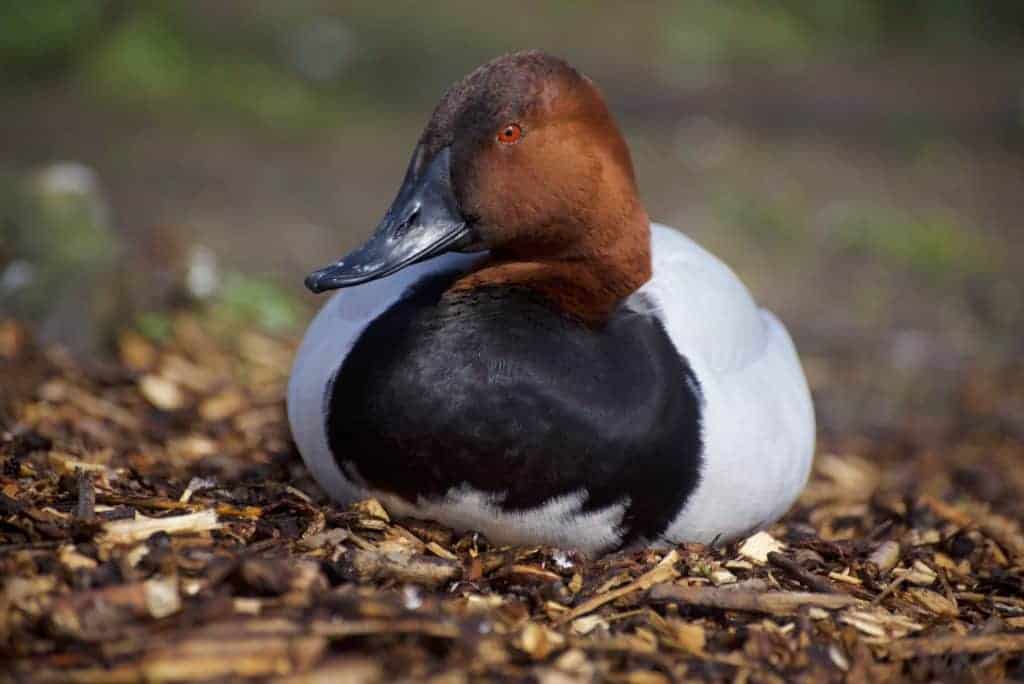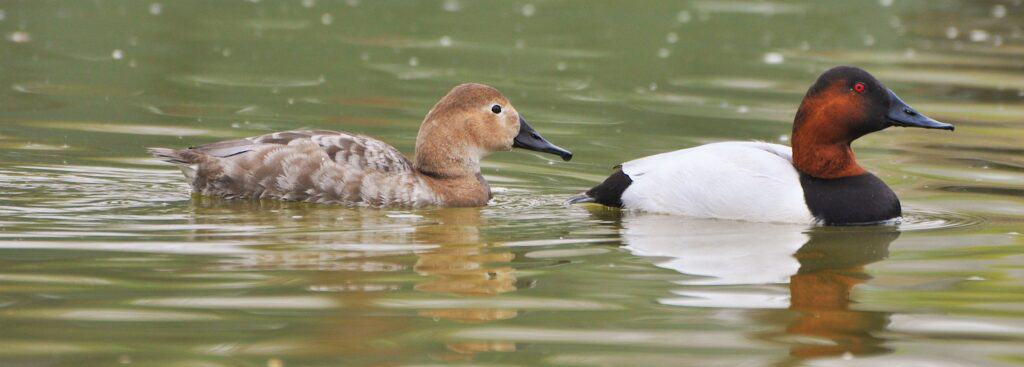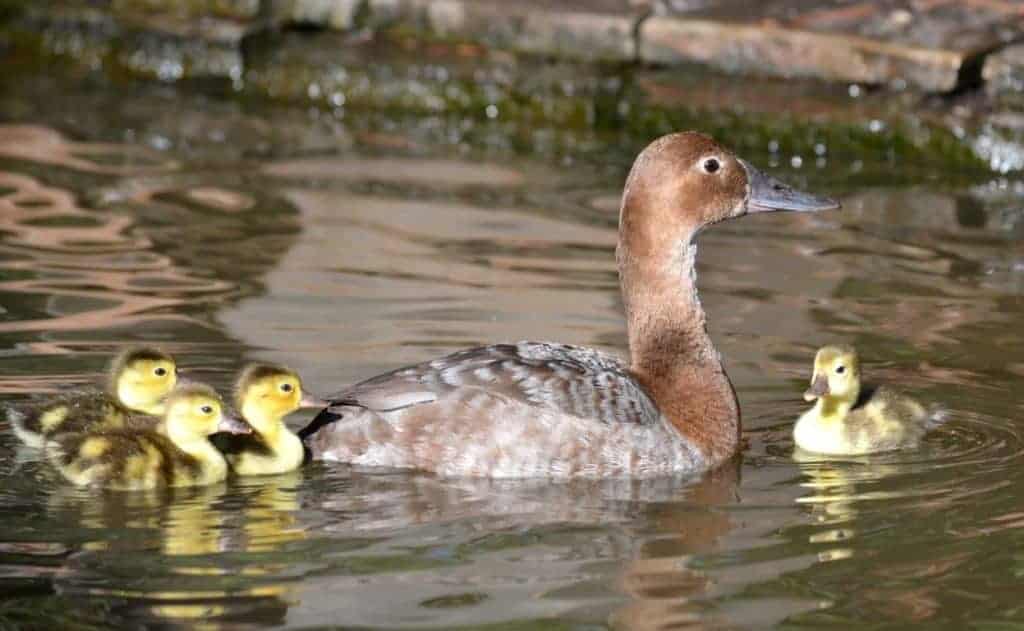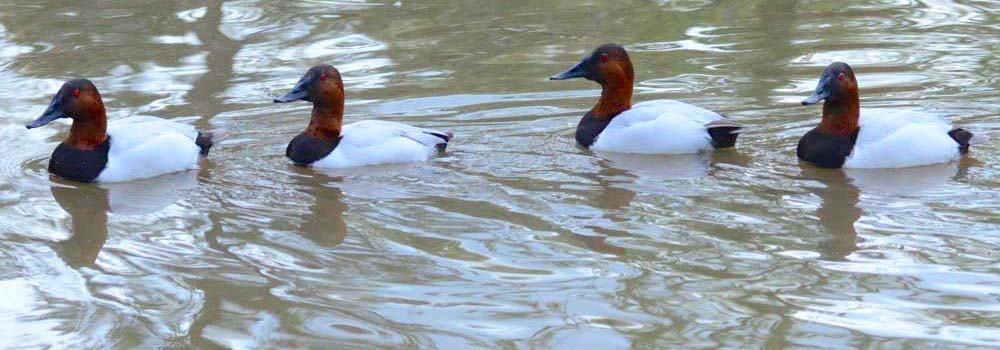Canvasback

Canvasbacks feed on vegetation, often diving to excavate what they can find on the bottom. The females select the nest sites, often in vegetation over water.

Aythya valisineria
The Canvasback is a common, large diving duck, native to North America. They have a well-established breeding population through central Canada, north through the middle of the continent into central and northern Alaska. They over-winter in the southern United States and along the west and east coasts of Canada as well. There is significant overlap between breeding areas and over-wintering spots. There are some isolated breeding populations along the Canadian border with the United States.

This duck spends most of its breeding season in freshwater lakes and prairie potholes. They re-establish new mates each year, while aggregating in winter colonies.

Canvasbacks lay 5-10 eggs, the duck incubates for 24-26 days and she rears the young. Nests are often parasitized by their close cousin, the Redhead. Canvasbacks are relatively common in captivity.